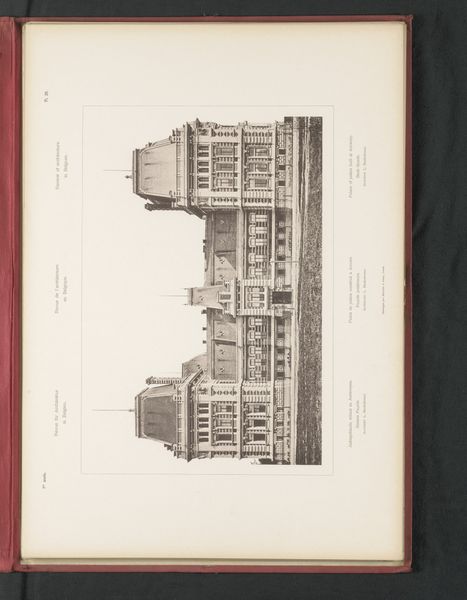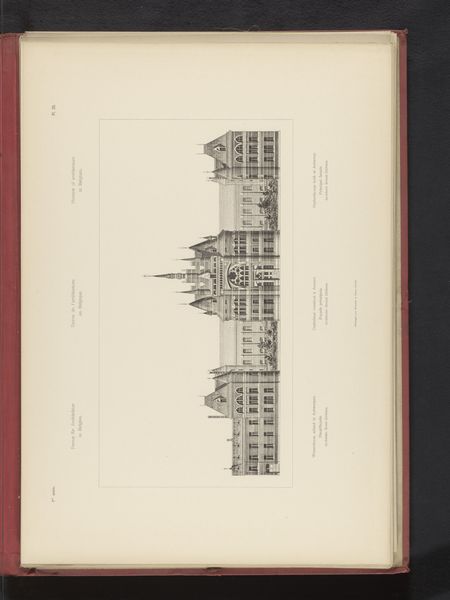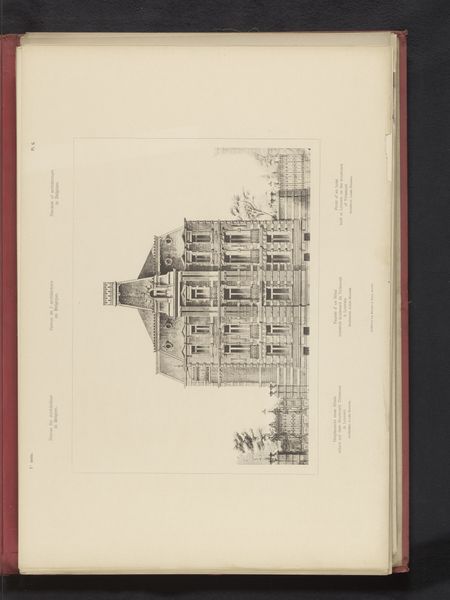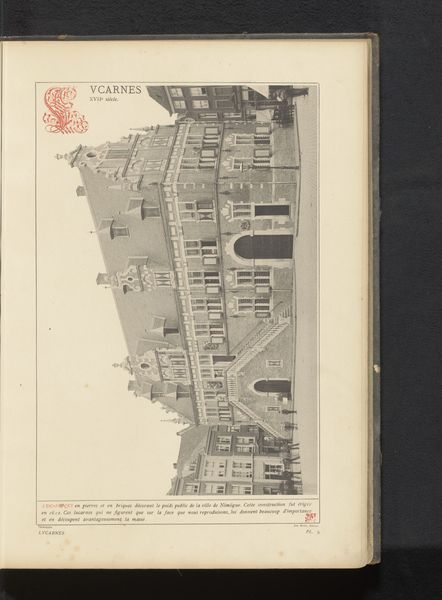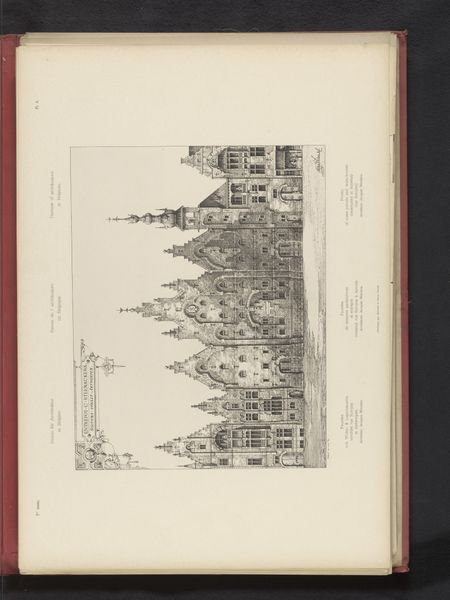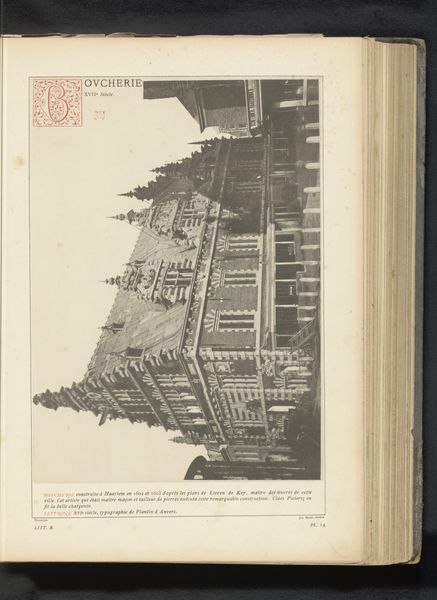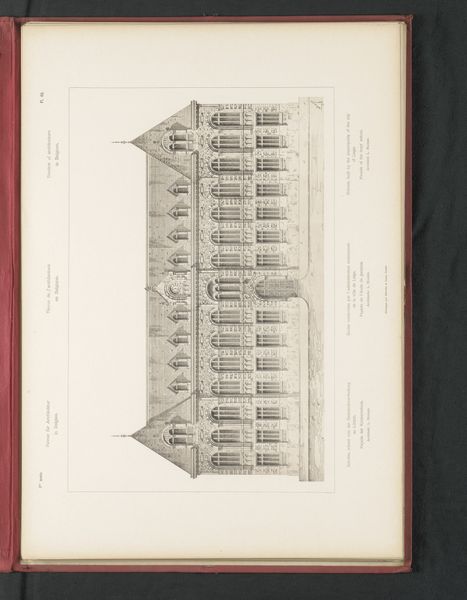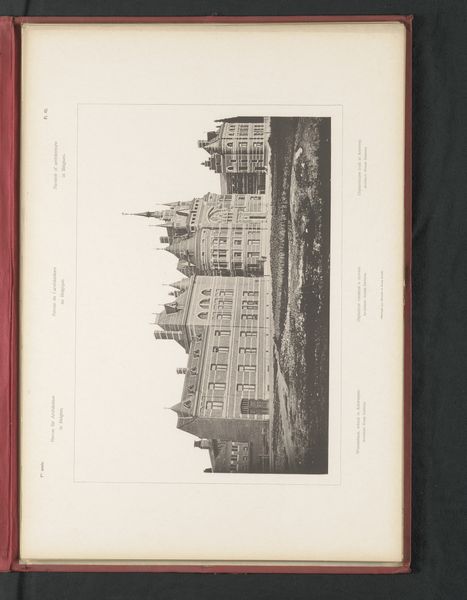
print, photography, architecture
# print
#
photography
#
cityscape
#
architecture
Dimensions: height 287 mm, width 350 mm
Copyright: Rijks Museum: Open Domain
This photogravure of the Doornik train station in Belgium was produced by Römmler & Jonas. Photogravure is a printing process involving a copper plate that has been photographically exposed and etched, then inked and pressed onto paper. The remarkable level of detail achievable through photogravure is evident in the rendering of the station's facade. The quality of the etched line captures the texture of brick and slate, the ornamentation of the windows, and the station's overall weight. This printmaking method, combining photography and traditional etching, lies at the intersection of industry and craft. Photogravure allowed for the wide distribution of architectural images at a time of rapid industrialization and expansion of infrastructure. While it democratized image production, it also required skilled labor and specialized equipment. As such, this photogravure highlights how modes of production, labor, and materials contribute to the cultural significance and aesthetic value of an image. We can appreciate it for its technical innovation, precise execution, and historical context, challenging traditional notions of fine art.
Comments
No comments
Be the first to comment and join the conversation on the ultimate creative platform.


